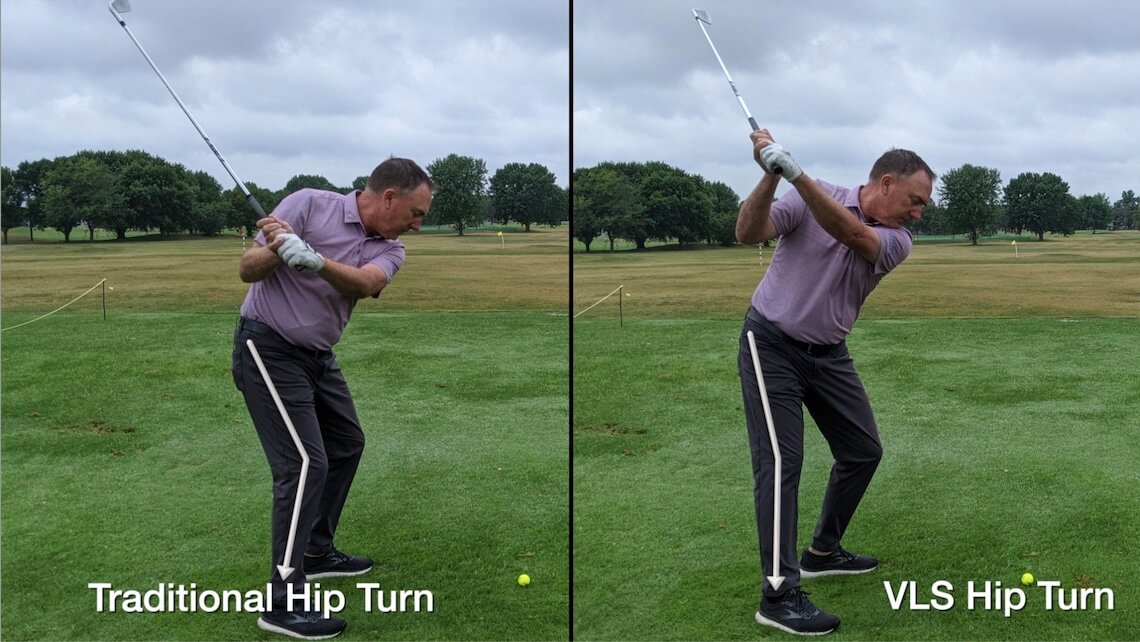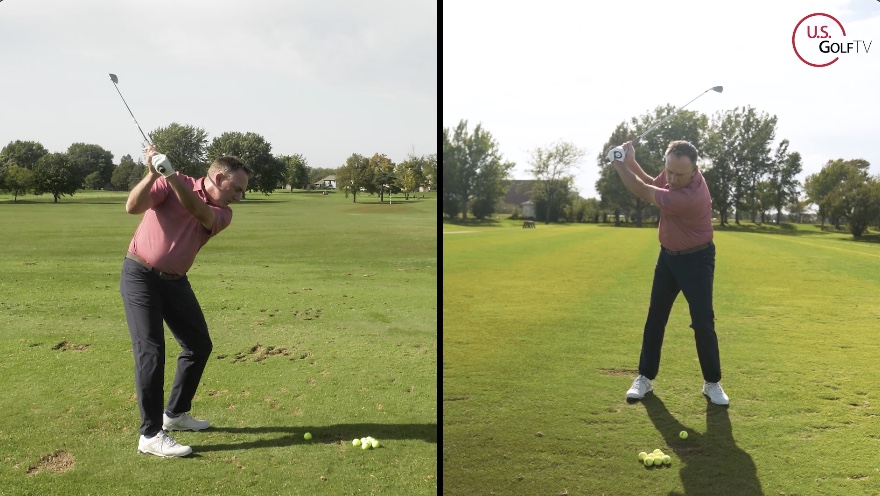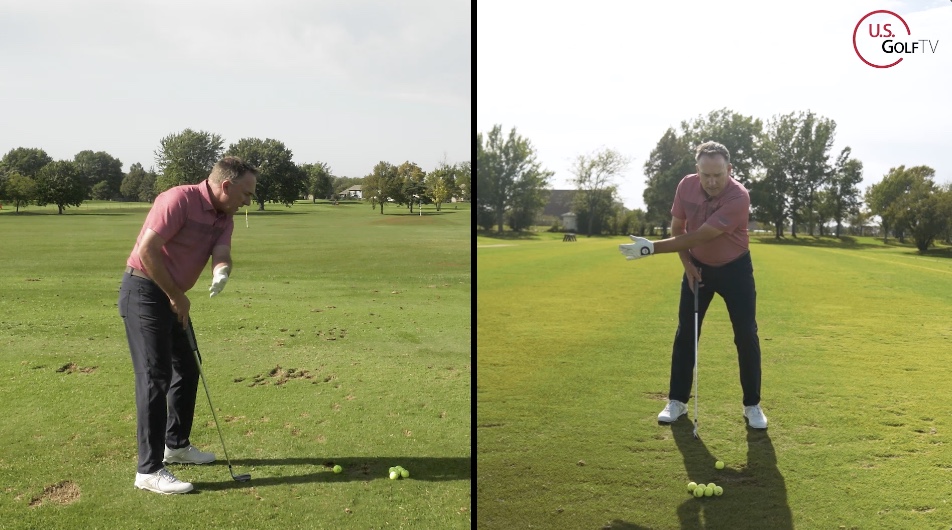No Holding Back: An Honest Opinion on Golf Swing
Want to Know the Truth About Your Suffering Golf Swing? Here’s What You Keep Doing Wrong (and How to Finally Get It Right).
I’ve given more than 10,000 lessons on the golf swing in nearly three decades as a golf coach. I’ve worked with golfers of all ages and skill levels.
From all that experience, I’ve come to one important conclusion. And I think you deserve to hear the truth—the blunt version.
If you’re not getting any better, it’s because you’re trying to master someone else’s golf swing.
I’m not saying it’s your fault. Traditional golf instruction is designed around the techniques that work for professional golfers. There’s almost no escaping it.
You can take lessons at your local course, flip through a golf magazine, or search for golf instruction videos on YouTube. Odds are high they’ll all give you advice made for elite athletes.
It’s not bad advice. Most of it’s excellent advice if you’ve got a young, flexible body and a lot of free time to practice.
But if you don’t?
Then it’s time to finally question all those “tried and true” golf tips that have been handed to you over the years.
I’ve developed an entire methodology based on the strengths and abilities of the everyday (often senior) golfer. If you’re ready to go all-in, you can get to know the full Vertical Line Swing System here.
For now, let’s just get some quick wins by debunking three common tips that are probably doing more harm than good in your golf swing. I’ll give you simpler tips to replace the old advice, as well as strategies for practicing what you learn.
(I promise, you’ll pick up these new tricks way faster than the old ones.)
Finally, I’ll leave you with a pre-shot routine so you can put all these ideas to work into your game immediately.
Let’s jump in.
Golf Swing Tip #1: Pivot
The pivot is everything.
The way you shift your weight and rotate your body affects the tempo of your golf swing. And a well-executed pivot is the secret to picking up clubhead speed and adding yards to your golf shots.
In fact, this skill is probably the one I hammer home the most when working with my more “experienced” students. (You’ll understand why in a minute.)
Now, you’ve probably been told time and again that you want to start with more weight on your lead foot and keep it there throughout your swing. Not only does this rob you of extra power, it can wreck your contact.
Traditional golf instruction also tends to champion “X factor.” That was huge when I first started as an instructor.

Have you ever been told to turn your shoulders as far as you can on the backswing while restricting your hips? Has anyone ever suggested that you want to create as much difference as possible between the angle of your hips and the angle of your shoulders?
That’s X factor. It’s supposed to be the best way to generate more speed.
Now, if that were true, golfers like me would be out of luck. I don’t know about you, but I can at least say for myself that my most flexible days are behind me.
Fortunately, I know a better, more painless way to swing it fast and hit it far.
What to Do Instead
There are two parts to this.
First, you do want to start with more of your weight on your lead foot at setup. But then you want to transfer that weight to your trail foot in the backswing and shift it forward again as you swing through.
That back-and-forth motion is the single most effective way for older golfers to increase clubhead speed. It’s painless, you don’t have to have a wide range of motion to pull it off, and it’s still classic athleticism.
Think of the way an MLB pitcher shifts their weight as they throw a pitch. They use a back-and-forth motion that helps harness the full power of their body. Why wouldn’t we do the same in our golf swing?
The other thing you want to do is allow your hips to turn as you swing back. When you let your hips turn instead of restricting them, you can get a longer swing. That’s going to give you more distance.
In fact, let your trail knee release a bit on the backswing as your lead knee flexes so you can get even more hip turn. There should be a decent-sized gap between your knees.

Just as with weight shift, this isn’t some kind of compromise senior golfers have to make to avoid pain. It’s just intelligent use of the human body. Watch old videos of Jack Nicklaus or Andy North. They do the exact same thing.
Now, how do you practice these skills so they become second nature?
How to Practice Your Pivot
An easy tip makes for easy practice. I recommend a three-setter. It looks like this:
- Take three practice swings (no ball) in a row, just focusing on shifting your weight and turning your hips.
- Step up to the ball and hit it.
You’ll likely find that the motion you found in your three-setter stays with you as you make your actual golf shot. Run that quick drill as often as you need to in order to turn that power-packed pivot into a habit. You can even do it as a pre-shot routine.
Couldn’t be easier.
Golf Swing Tip #2: Your Takeaway
Here’s another common swing tip that gets my back aching just thinking about it.
“Flatten your backswing.”
Or maybe someone has told you to swing around your body or get the club behind you. It’s all the same thing. And it’s wrecking both your speed and contact.
Again, it’s not that the advice is wrong. It’s just not right for the average golfer.
This swing tip assumes you can achieve super deep rotation in your upper body. But I’ll tell you right now, I can’t. Not at this age. And if you can’t either, guess what?
All this move is going to do is shorten your swing and tweak the heck out of your back. So let’s try a different strategy.
What to Do Instead
The swing techniques for young, fit athletes tend to focus on restriction and tension. What we want instead is free, easy, natural motion.
So think about giving your lead arm some freedom in the backswing. Let it move up and back in a more vertical motion.
You can even get up and do it right now without a club in your hand. Make your lead arm reach low and around like you’ve been taught. Then let it swing upward.

You’ll probably notice that it goes farther on a vertical path. It also feels easier and—a huge bonus—creates a natural rhythm in your swing. All of that is going to equal more speed, more distance, and much better contact.
Now, let’s make sure this idea sticks.
How to Practice Your Takeaway
When you’re first getting used to this straight-back-and-up motion, try this:
- Take your regular golf posture without the club and just swing your lead arm straight up and back a few times. Continue the motion until it starts to feel very free and natural.
- Add the club but leave the ball out of it at first. Practice the same motion a few times. Once you’ve got a feel for it in your body:
- Hit a shot.
Mastering this skill is going to bring you even closer to nailing the next one.
Golf Swing Tip #3: Tempo & Rhythm
Do you feel your eye twitching in irritation when I tell you “Your tempo’s off”?
Maybe you don’t. But a lot of golfers do. It’s “advice” amateur golfers hear all the time. “You’ve gotta fix your tempo.” “You’ve got bad rhythm.”
It may not be wrong, but it’s not exactly helpful. It’s criticism without a solution. Judgment without guidance.
Honestly, I think a lot of folks who give you this insight just don’t know how to help you fix it. Here’s why:
What to Do Instead
You have to find your tempo with your body. No one can break it down for you on a diagram. There’s no step-by-step.
And that’s why most people just like to point out the problem and leave it up to you to figure out the fix.
Now, here’s the good news.
You’ve already got the tools to find a steady rhythm in your golf swing.
You know you want that even lead-trail-lead weight shift in the pivot. You know how to turn your hips and release your trail knee so there’s no tension interrupting your rhythm. And you’ve learned how to find a free and easy motion with your lead arm.
All you need now is a practice strategy that helps you feel the natural flow of these elements and find that tempo every time you take a shot.
How to Practice Rhythm and Tempo
For this, I teach all my students the Continuation Drill. It’s really simple:
- Take three practice swings in a continuous motion. Don’t stop to reset between swings. Just swing back and through and back and through and back and through.
- Step up to the ball and hit a shot.
As you take those continuous practice swings, be sure to incorporate all the other things you learned. Shift your weight between your feet, allow your hips to turn, release your trail leg, and let your lead arm move straight back and up.
By repeating that motion without a pause, you’ll be able to feel the natural rhythm of your golf swing. When you step up to take your shot, the tempo you just uncovered will still be in your body.
Now that’s all well and good, but what happens when it’s time to actually play a round? How do you put all these ideas to work on the golf course?
Applying It All to Your Game
I’ve got a pre-shot routine that’s going to help you get the hang of these new techniques. In fact, you can start using this routine on the course tomorrow, and I guarantee you’ll start seeing better shots immediately.
Pre-Shot Routine
- Take three continuous practice swings, just like you did when you were practicing your tempo.
- On the last swing, make sure you finish with your knees touching.
- Step up to the ball and take a shot.
Sounds like a weird detail, I know, but trust me on this. When you swing with the intention of getting your knees to touch in your finish position, you naturally find balance in your golf swing.
At that point, you’ve got just about everything you need to hit longer, solid golf shots. A power generating pivot, a free and natural takeaway, consistent rhythm and balance… what more could you want?
And the beauty of it all is that it’s so much easier than twisting and contorting and restricting your body just to mirror tour professionals.
But try it for yourself. Then let me know:
What Are Your Honest Thoughts About the Golf Swing?
Do you think these tips will help your golf swing?
Is there any traditional advice that’s never really worked for you? Or that maybe used to work but has become way less effective now that you’re getting a little older?
Join us in the comments! Share what’s on your mind and let us know where you’re from.
Looking for more tips and resources designed specifically for the everyday golfer? Check out vlsgolf.com! We’re constantly adding new content, training aids, equipment, instructional series, and more… all of it made to serve your golf game.
 |
|
